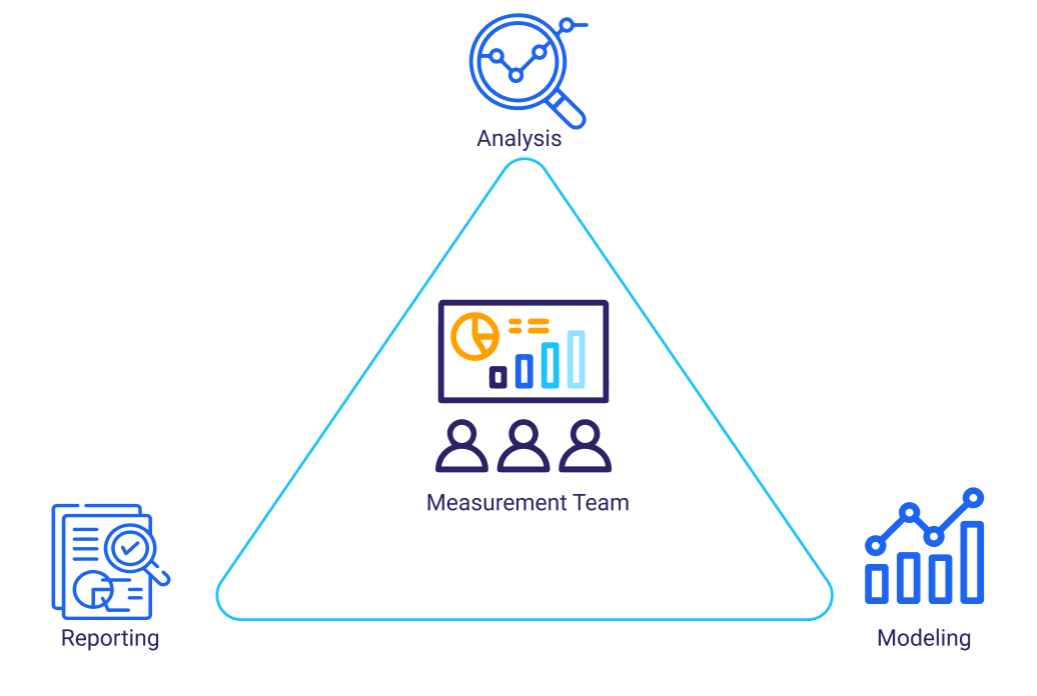The Truth Behind Agile Marketing Mix Modeling
Change is the new market reality. In today’s fast-paced technology market, progress at a higher frequency and velocity is the norm, making agility the new business building block.
The adoption of an agile Marketing Measurement Workflow is encouraged to ensure the organization’s success and efficiency.
In fact, in the 2017 Deloitte Global Human Capital Trends study, 94% of the organization mention that “agility and teamwork” are essential to the success of their company. What do we mean by being agile? A high level of ambiguity surrounds this term since it differs from one field to another.
To keep it simple, business agility represents the ability of a team to master and leverage change. In the marketing context, it involves the use of data analytics to quickly respond to business changes and stakeholders’ demands in a shorter cycle time.
What is driving the need for Agile
Marketing Mix Modeling
Originated from the software development industry, the agile methodology has multiple drivers. First, stakeholders expect faster delivery time adjusted to their changing needs. Based on KPMG’s 2018 survey on agility, more than 68% of organizations believe that faster product delivery is a key driver for agility. Second, continuous improvement of customer satisfaction is a main priority for all businesses.
This ensures the quality of the delivery especially with the rise of competitive threats. Flexibility is another important trigger to adopt agility, Deloitte survey indicated that 45% of organizations emphasize that higher flexibility requires an agile workflow. In regards to speed, quality and flexibility does not come with a cost disadvantage. But the power of agile balances efficiency and cost savings.
How to be agile in Measuring Marketing Effectiveness
Two pillars ensure an agile workflow in the context of Marketing Mix Modeling projects:
1. Team & Culture
Before shifting to agile, one must create the appropriate environment that would ensure a successful Agile implementation. A specific culture would enable the marketing analysts’ team to be: Growth driven: Growth and agility are complementary. Nurturing one would lead to the development of the other. Collaboration oriented: A team spirit is a requirement. A collaborative team share focus and Information in every instance, activity, and cycle time. Feedback obsessed: To constantly improve, one must sanctify feedback. In agile workflow, feedback is frequent, and work is shared and discussed at all times.
2. Technology that fosters agility
Agile project management focuses on breaking down complex projects into more manageable tasks to be tackled in short iterations. Teams that implement the agile project management strategy will perform more efficiently, adapt to evolving project requirements, and refine their workflow.
It is therefore essential to use a technology that:
- Allows for multiple users: In a digital-oriented world, a multi-user solution is a must. Such software enables a team from across the globe to work on the same projects simultaneously and autonomously, resulting in performance and efficiency increase.
- Facilitates team collaboration: The main idea behind the agile methodology is tasks breakdown. The adopted software must account for this hierarchy while providing all team members with an overall project progress insight. For example, within the same Marketing Mix Modeling project, we can find different sessions dedicated for the modeling of different regions or products. Team efforts can also easily come together to move straight from modeling to result assessing and reporting.
- Merges Outcome: Results merging is among the baffling problems that entail a high risk in any project. Imagine two project sessions built using different approaches and different lists of variables. It would certainly be a challenge to merge these sessions together. Managers usually dread this task due to its delicacy. Assembling different parts to make a whole completed project may result in inaccuracies and errors if not done properly. Consequently, appropriate tools must be used to ensure a rapid full-proof merge of the different sub and main tasks.
How Agile Methodology
supports Iterative Modeling
The market is rapidly transforming making the need for faster data-driven results a priority. For example, let’s assume that a client would like to understand and forecast the effect of emailing on their sales. It would typically take the analytics agency weeks to deliver the appropriate results in the context of a holistic model. During a crisis, such as the current pandemic, time is not an ally. Within few weeks, results would be irrelevant. Consequently, the highly competitive market calls for more frequent updates to account for the one constant in marketing: change. To adapt to these changes, the adopted software should allow flexibility
However, it should also be cutting project duration significantly leading to a better accommodation of market alternation. In the agile world, the project is conducted through multiple iterations. During the first iteration, a first draft of the entire project is mapped and created along with the necessary reports and forecasts. Then through each iteration, the model is improved, and the reports are automatically generated. This process makes last-minute changes much less troublesome and the overall adaptation to change more effective.

All in all, teams that adopt the agile workflow methodology can complete work faster, adapt to changing project requirements and optimize their workflow. However, the prerequisites for a successful Agile Marketing Analytics is to prepare the adequate environment and the adoption of appropriate technology and tools.






